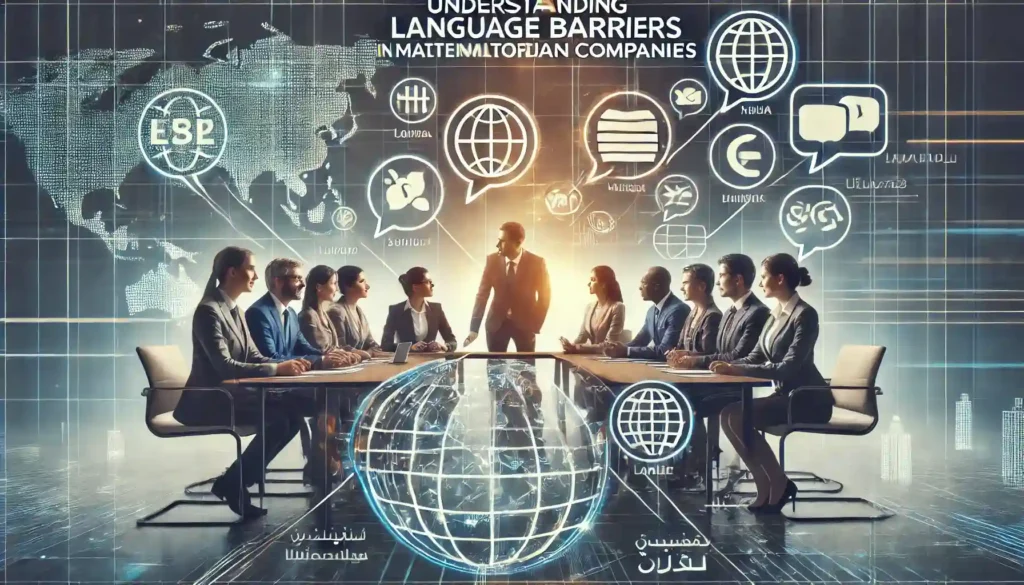Language Barriers in Multinational Companies
In today’s globalized business landscape, multinational companies are more interconnected than ever before. However, this interconnectedness brings its own set of challenges, with one of the most significant being language barriers. Language barriers in multinational companies can hinder communication, collaboration, and overall productivity, making it a critical issue that businesses must address. Whether you’re an executive striving to streamline operations or an employee navigating a diverse workplace, understanding the impact of these barriers and how to overcome them is essential.
Understanding Language Barriers in Multinational Companies
Effective communication faces significant hurdles due to language barriers in multinational companies. These barriers can disrupt workflow, impede collaboration, and hinder innovation.

The Impact on Communication
Language barriers directly affect communication efficiency. Misunderstandings can arise, leading to errors in tasks and projects. Team members may struggle to articulate ideas clearly, resulting in fragmented discussions. Project timelines may extend as clarifications are needed for instructions and feedback. For instance, non-native speakers might misinterpret technical jargon, causing mistakes.
Cultural Diversity and Language Skills
Cultural diversity enriches the workplace but also heightens language challenges. Diverse linguistic backgrounds influence communication styles and interpretations. Employees may exhibit varying proficiency levels in the company’s primary language, affecting their contribution. An employee fluent in the primary language may inadvertently overlook colleagues’ linguistic struggles, leading to exclusion. This disparity underscores the need for tailored language training programs to bridge proficiency gaps and create an inclusive environment.
Strategies to Overcome Language Barriers
Effective strategies can help multinational companies navigate language barriers to achieve smoother operations and improved collaboration.
Implementing Language Training Programs
Language training programs significantly enhance proficiency across teams. These programs, tailored to employee needs, boost confidence and communication skills. Incorporating both formal classes and informal practice sessions provides a well-rounded learning experience. Leading companies Google and Siemens have adopted such programs, seeing a notable increase in team coherence and productivity. Regular assessments ensure progress and adjustments in training methods to meet evolving needs.

Using Technology to Aid Communication
Leveraging technology plays a vital role in bridging communication gaps. Tools like real-time translation apps, multilingual platforms, and AI-driven software facilitate seamless interactions. Applications such as Google Translate and Microsoft Teams offer instant translations, enabling quick comprehension. Adopting such technologies minimizes misunderstandings and accelerates project timelines. Additionally, implementing company-wide communication platforms ensures that all employees, regardless of location, stay connected and informed.
Benefits of Addressing Language Barriers
Addressing language barriers offers multiple benefits for multinational companies. Improved communication enhances collaboration and drives innovation.
Improved Workplace Integration
Employee integration improves with reduced language barriers. Teams, such as project teams in Google, work more cohesively when communication is clear. Employees from diverse backgrounds feel more included, fostering a collaborative environment. Integration efforts minimize misunderstandings and enhance productivity, as seen in diverse companies like Siemens.
Enhanced Global Business Strategy
A clear language strategy strengthens global business operations. Companies adapting to local languages, like those in emerging markets, better connect with clients. This adaptability empowers effective negotiations and customer service. Multinationals, leveraging AI-driven tools or multilingual teams, position themselves competitively in global markets. Addressing language barriers directly impacts market expansion and client relationships.
Conclusion
Addressing language barriers in multinational companies isn’t just about improving communication; it’s about fostering a culture of inclusivity and collaboration. Tailored language training programs and innovative technology can bridge gaps and unlock potential within diverse teams. By investing in clear communication strategies, companies can enhance workplace integration and drive a stronger global business strategy. The success stories of companies like Google and Siemens show that overcoming language barriers leads to increased productivity and better client connections. It’s clear that tackling these challenges head-on can yield substantial benefits for any multinational organization.






